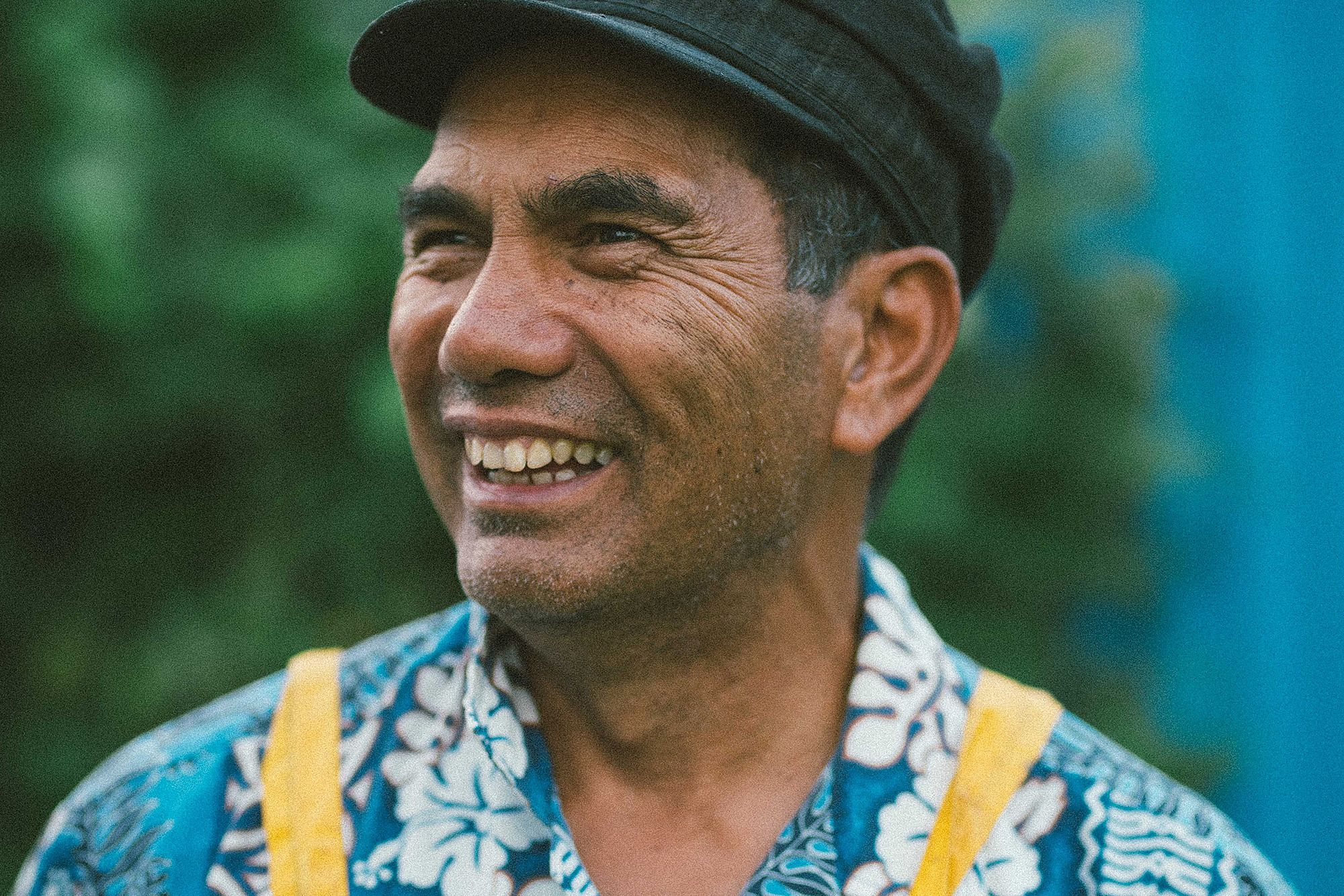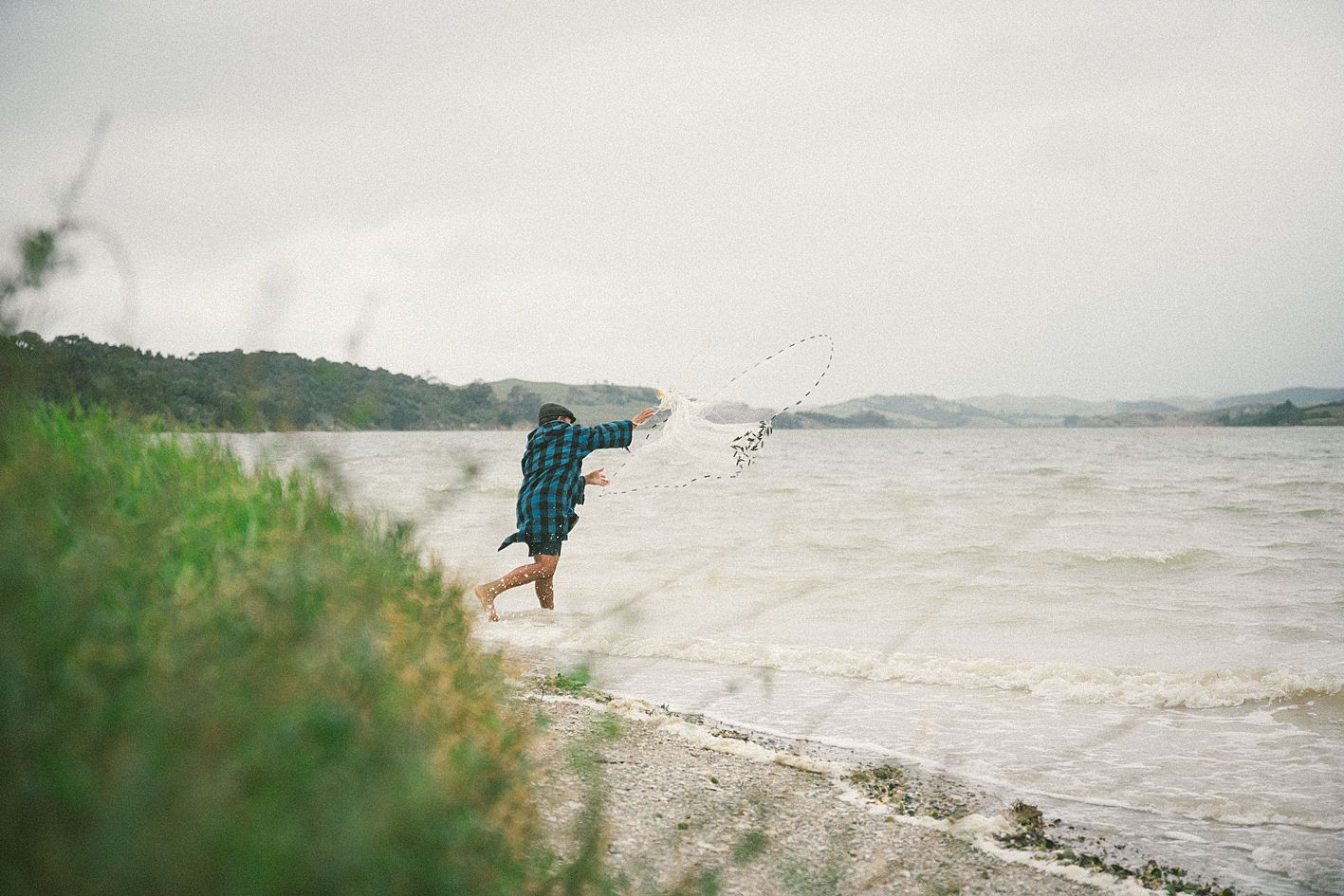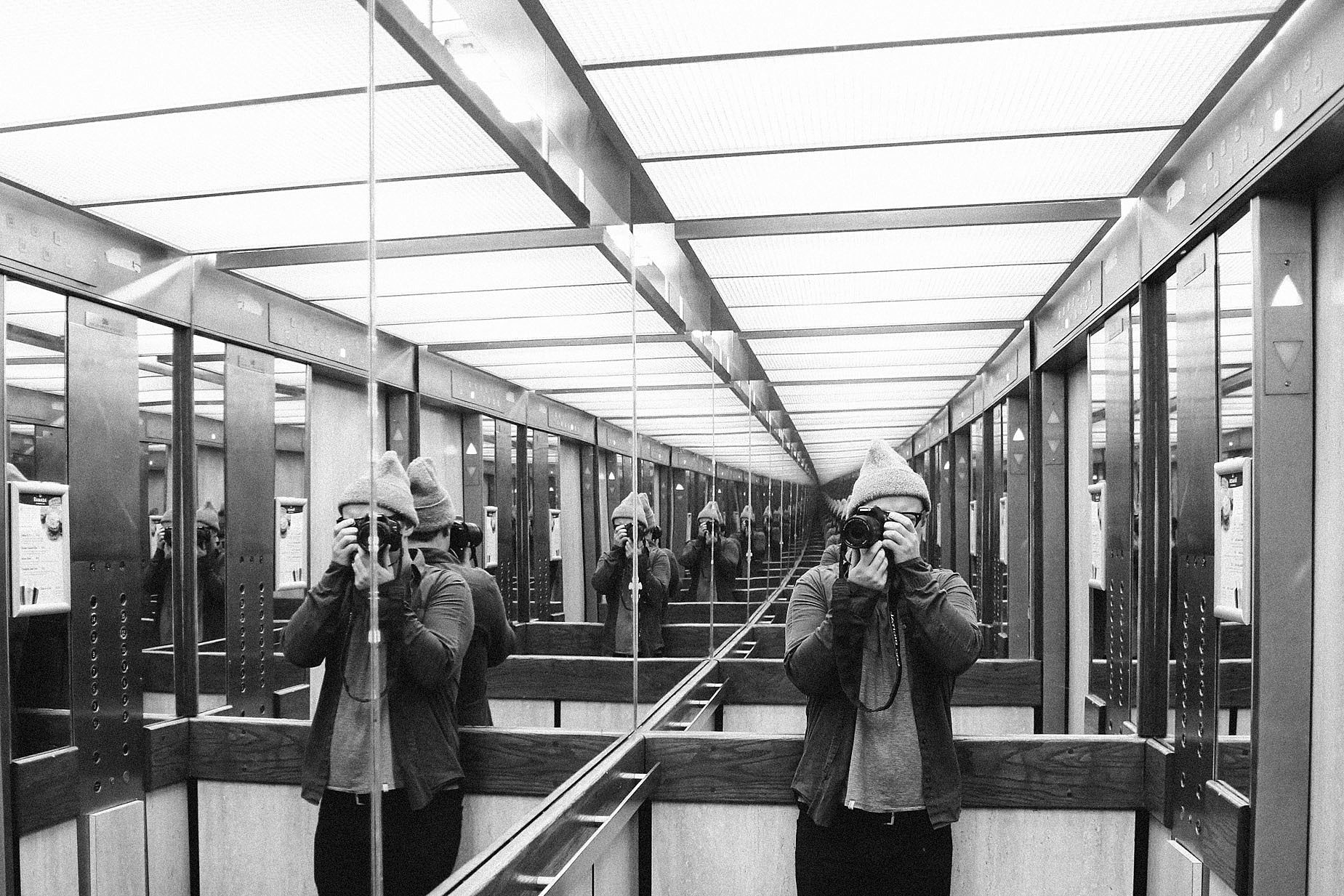Through The Lens: Becoming Māori with Fred Renata
Joseph McAlpine shines a light on national treasure and cinematographer Fred Renata.
Joseph McAlpine shines a light on national treasure and cinematographer Fred Renata.
Fred Renata is one of New Zealand’s most distinguished cinematographers. His work as a director of photography has taken him to all corners of the globe. After a career in electrical engineering, he moved into filmmaking, joining the lighting department on Merata Mita’s 1987 feature, Mauri. He has since shot some of New Zealand’s most important Māori-centric films: Poi E: The Story of our Song, Mt Zion, Kawa, Let My Whakapapa Speak, Tapu, Hikoi and Hotere.
I recently spent some time with Fred at his home in Maungaturoto. Among other things, we stewed pears, talked about music and art, and growing up Māori in the 1960s and 70s.
Joseph McAlpine: Fred, can you tell me a bit about your childhood?
Fred Renata: Well, I was born in Paparoa in 1956 and went to primary and secondary school here in Maungaturoto. We pretty much lived off the river down the back there. Dad worked for the power board. Mum arrived here in about 1953. A lot of my childhood was about rugby to be honest. Every Saturday there would be hordes of people down at the local rugby club. Everybody played rugby and that was it. It was like Strictly Ballroom. Quite terrifying in a way.
JM: Did you identify strongly with being Māori, growing up?
FR: No, I didn't. I was raised in quite a racist environment now that I look back on it. I didn't know what it was because I was like that too.
In a way, I decided to play it safe and not challenge negativity toward Māori. My dad followed his father here from Ngāpuhi. This area is Ngāti Whātua. We were slightly isolated in the Māori community because of that, so we kind of joined in with the whole Pākehā assimilation thing. Let's just get along, be racist together and hate all Māori, including myself and my siblings.
If there was anything to be said it was never a positive. In typical New Zealand style, “Gee that bugger can play rugby,” the sort of safe compliment where, “Damn you can play rugby, but you're not much good for anything else.”
My eventual film career, in a strange way, was also the catalyst for my eventual identification as Māori.
My eventual film career, in a strange way, was also the catalyst for my eventual identification as Māori.
JM: You spent your childhood here in Maungaturoto. What did you do when you left?
FR: I went and did electrical engineering. First, I worked in Whangarei with the North Auckland Electric Power Board then down in Tokoroa where I worked at Kinleith for ten years as an engineer in the mill, making paper.
Down there I became isolated from all my music friends in Whangarei. I had been exposed to a lot of country music up till then. That’s when the identity crisis started to kick in and I started thinking, “Do I really want to be emulating guys like Merle Haggard?” In Tokoroa I was surrounded by people from all around the world – UK, Denmark, Germany, USA – all talented papermakers. I felt alone, with no real identity, stuck in no-man's land.
They knew who they were. Why didn’t I?
JM: How did you come to thinking differently about being Māori?
FR: I have always loved diving, you see, it’s the hunter-gatherer thing. I was in the water at Lottin Point on the East Coast diving for kina. I came to the surface and there was a pair of shoes on the rock in front of my mask. I looked up and this guy says, “Are there any pāua down there?” I replied, “Yeah, do you want some?” The guy on the rock was Ralph Hotere.
That night we went to the Te Kaha Pub to have a beer with Zac Wallace – yes, from Utu. Zac was quick to point out that the locals were not ecstatic about us because we were from the north, meaning Ngāpuhi. Ralph said he was Aupōuri, and Zac asked me where I was from. I had to swallow for a moment and muttered, “Ngāpuhi.” He laughed and said, “Shit hot.”
That was the first time I had faced up to being Māori and I couldn’t have wished for a better response. I had just turned 31. I had never met any Māori who were sure about who they were.
Ralph had a quiet strength about him. Zac had a loud strength about him. They both liked pāua.
Ralph had a quiet strength about him. Zac had a loud strength about him. They both liked pāua.
JM: So Ralph Hotere became an important influence on you?
FR: From that time, when I entered the film industry, I would say he has always been my main influence. I didn’t know he was an artist, he was just a guy who wanted some pāua that I got to know. I sort of tumbled into it not really knowing much about art or Ralph's fame. It was more about cooking and living and Miles Davis. It wasn't like he was preaching about being Māori, he just was Māori. An artist who happened to be Māori.
Art has a way of crossing boundaries. A bloody good artist is a bloody good artist. As Ralph used to say, “Just make it bloody good and original.”
One day in Port Chalmers I saw him stop at a shop-window display and chuckle. I caught up to see a number of children’s drawings in the window. “Children are the best artists,” he muttered. Ralph got a kick out of seeing good work.
JM: How did you start working in the film industry?
FR: Early on, I got caught up in a wave where they were trying to get Māori into film crews. I was just there at the time and they needed someone in the camera department. I was very technical and the camera department is totally technical, especially with film cameras.
I didn’t know anything about the industry apart from feeling it was madness. I didn’t understand why it was all so serious and wasn’t fun. So, it was a baptism of fire from the very first film. I had to decide, did I want to be part of this madness or go back to my comfortable life as an engineer.
JM: So when did you start shooting films and what were those first projects like?
FR: Back in 1987 there was a series called E Tipu e Rea, produced by Larry Parr. It was the first time they’d made a Māori drama series for television. So on that project I took over the focus pulling and training loaders. I got to work with guys like Chris White, Alan Locke and Allen Guilford. I still didn’t even know if I wanted to be a director of photography.
Then along came the $5000 NZ on Air music videos. During the week I was assisting to survive, and on the weekends shooting music videos. It took on a life of its own from there. Before you knew it I was a DOP, going hard in the TV and commercial world. The more I got into the film industry the more I got into being Māori.
Things changed for me. I stopped listening to stuff like The Eagles and plugged into Miles Davis. It's still a long journey but my appreciation for being Māori grew and grew.
JM: Where does your work take you?
FR: Well, I get around. I’ve spent some time in France recently. Also up in Darjeeling, India. Did you know wifi is free everywhere in Tanzania? Why? Because they figured out it opens doors. A little kid with a smartphone in his house with a dirt floor can become really good at something with access to the internet.
I’m a bit over the departure lounge and enjoy coming home to Maungaturoto, even though I haven’t got the wifi hooked up.
JM: Have there been any downsides to your life in film?
FR: It did take a toll on my personal life. It was the working hours and the time spent there, and how you can’t say no. You know, you’re working 24/7, doing stuff for free and always on the hunt for work.
It was especially difficult being a parent. I missed some important years and you don’t get those back.
JM: Could you explain what a director of photography does?
FR: The job of the DOP is to communicate the story visually. Give the film a look that suits the nature of the story. Capturing it in such a way that if the sound was turned off you would still know what was going on. Or at least have a feel of what is going on. That’s the ultimate.
The way I see it is the only thing we’ve got to go on is the sun. That's it. It’s about the light from the sun. It gives the energy for the other lights we use. All light has a whakapapa to the sun. As a very basic principle, being a DOP is about seizing the sun and guiding it.
It’s about the light from the sun. It gives the energy for the other lights we use. All light has a whakapapa to the sun.
JM: Is there any advice you could pass on to young filmmakers?
FR: You have to figure out whether you love making films. There are certainly better ways to make money. You usually become good at something if you love it because you can communicate with it more.
What defines those people who go on to be great filmmakers is they have incredible taste. They have their own minds and do not listen to what all the sheep are doing and what’s popular on the day.
It’s good to think when you’re doing a low budget project, that there’s only three stones to cross the river. In other words, you’re only three good projects away from making it big. It’s all about taste and what you are into. You could end up emptying the river with a teaspoon to get across.
It’s good to think when you’re doing a low budget project, that there’s only three stones to cross the river...You could end up emptying the river with a teaspoon to get across.
JM: Is film important for Māori?
FR: Yes it is important. In the same way that other art is important, for example music. Music always existed for Māori, it was a way of transporting stories. Now, films are an opportunity as a visual stage for story. A document or a snapshot of time, like a photograph.
There have been cultural restrictions that I feel have clouded our perception of who we are and the stories we tell. I think we have to first be allowed to return to the source of our being. The creation story and our experience of it.
JM: And what's life like for you now?
FR: Five years ago I came back to my home town and leased this derelict New Zealand Railways bus shed opposite the railway station. My mum still lives here in our family home and I have a sister up the road. It is 30 years since I was 31.
All images by Joseph McAlpine.










